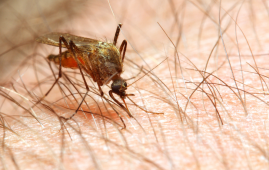

Imagine receiving care for a young, healthy heart that would enable it to mend from a potentially fatal heart attack decades later.
You are not alone if you find this possibility absurd. Prof. Eldad Tzahor, whose Weizmann Institute of Science group investigates heart tissue regeneration, had similarly thought regarded it as science fiction up until recently. Because they are the largest cause of mortality worldwide, cardiovascular diseases aren’t typically thought of as something that can be prevented by preventative care.
Tzahor and colleagues in his lab, however, have now turned on a molecular mechanism in healthy mouse hearts that makes these mice resistant to further heart attacks—even when they happen months later.
The researchers emphasize that the process is a very long way from being relevant to humans. However, their findings, which were just published in Nature Cardiovascular Research, fundamentally alter our perception of the heart’s capacity for regeneration as well as that of potential organ replacement therapies.
“It’s a proof of concept,” says Tzahor, “and it points to new avenues of research that examine giving heart treatment not only after the damage happens, but from a preventive position that increases the capacity for recovery from an injury before the damage even occurs.”
The research, which was directed by Dr. Avraham Shakked and conducted in Dr. Tzahor’s laboratory at Weizmann’s Department of Molecular Cell Biology, concentrated on genetically modified mice whose cardiomyocytes—the cells that make up the heart muscle tissue—overexpressed a gene that causes cell division in mice and other mammals, including humans. Researchers in Tzahor’s group had previously discovered that the gene, ERBB2, triggers cell division in cardiomyocytes—an amazing discovery given that these cells lose their ability to multiply around the time of birth.
“During fetal development, our cells are assigned their different roles—nerves, cornea, heart muscle etc.—through a process called differentiation,” says Shakked. “It’s characterized by a spectrum: On one end are stem cells, which are undifferentiated but capable of dividing and producing various types of cells. On the other end are highly-specialized cells like cardiomyocytes, which are no longer able to divide after becoming differentiated. They’re very effective in their function, but the tissue they comprise does not regenerate naturally.”
This is one of the main causes of the devastation caused by cardiac events. Massive numbers of cardiomyocytes are destroyed during heart attacks and cannot be replaced by the body. As a result, even those who survive the attack frequently have decreased heart function.
When Tzahor’s team in earlier research had been able to cause the division of cardiomyocytes—by short turning on ERBB2 in these cells—overall heart function actually temporarily worsened, rather than immediately improving. This occurred as a result of the ERBB2-expressing cardiomyocytes dedifferentiating, or returning to a less specialized condition that is more akin to that of a fetal heart. As a result, they were unable to contract as much, which is necessary for healthy cardiac function.
However, after the overexpression was halted, the cardiomyocytes went through redifferentiation, which meant they once again became highly specialized, and heart function increased.
The goal of the current study was to clarify what happens to hearts that have been “rejuvenated” by ERBB2 and how precisely they redifferentiate and resume normal function once the gene has been turned off. Such hearts performed identically to the control group, but Shakked observed some notable variations in gene expression between the two populations. “It was surprising and curious,” he remembers.
“We had assumed that everything returns to normal after ERBB2 is switched off in the cardiomyocytes. Yet here we were, seeing a different genetic pattern—overexpression in some genes and underexpression in others—following ERBB2 activation. In other words, we found long-term effects.”
Shakked and Tzahor wondered if ERBB2 expression could be adjusted for better heart function after making this discovery. It led to the hypothesis that ERBB2 was more than just a switch that blocks differentiation; rather, it was a component of a system that might make the heart more elastic and youthful, according to Tzahor.
The researchers conducted their earlier ERBB2 studies in the opposite sequence to test this theory. They turned on ERBB2 in healthy mice for a few weeks before turning it off once more, as opposed to turning it on in damaged mice to cause their cardiomyocytes to divide. The scientists then studied how those mice’s hearts responded to injury.
The result: Mice that had been made to overexpress ERBB2 recovered, but others did not. “The data made our jaws drop,” Tzahor recalls. “We had found a cardiac fountain of youth in those mice, a novel way of making the heart younger and stronger.”
The study team is currently looking at a number of theories on the processes by which a temporary overexpression of ERBB2 could aid mice in surviving potential heart injury. One theory is that the gene sets off a chain of events that makes it possible for more cardiomyocytes to survive the oxygen deprivation that characterizes cardiac attacks and is especially harmful to cardiomyocytes.
The researchers also revealed how a negative feedback loop drives redifferentiation in cardiomyocytes. “The body makes sure that differentiation happens because, generally, it doesn’t want cells that do nothing but divide, like cancer cells,” Tzahor says.
“That’s why ERBB2, while moving cardiomyocytes in the opposite direction of natural differentiation, simultaneously activates genes that trigger differentiation. There are checks and balances in place. If it weren’t for this mechanism, the dedifferentiated heart cells would not have been able to redifferentiate back to functioning cardiomyocytes,” Tzahor explains.
The researchers discovered that a mouse whose ERBB2 had been momentarily triggered at three months of age recovered from a serious heart damage five months later. “If we translate this to human years, it’s comparable to an 18-year-old getting treatment that allows that person to survive a heart attack at age 50,” Tzahor says.
However, this kind of treatment is at present nowhere near being applicable to human beings. “We’re lowering the function of cardiomyocytes to allow them to be restored in the future,” Tzahor explains. “From a clinical perspective, this is an extreme and drastic intervention. Still, at least in principle, our research might lead to a way of treating people who have a high risk of heart attack, before these attacks even happen.
more recommended stories
 How Soybean Oil Impacts Weight Gain and Metabolism
How Soybean Oil Impacts Weight Gain and MetabolismWhy Soybean Oil May Affect Metabolism.
 New Malaria Prevention Insights From African Biostatistics
New Malaria Prevention Insights From African BiostatisticsHow New Data Is Reframing Malaria.
 Coffee and Cognitive Function: Evidence Review
Coffee and Cognitive Function: Evidence ReviewA new narrative review in Cureus.
 World Summit Outlines Core Principles for Healthy Longevity
World Summit Outlines Core Principles for Healthy LongevityWhy Healthy Longevity Demands a New.
 Colorectal Cancer Screening Rates Low in Adults 45–49
Colorectal Cancer Screening Rates Low in Adults 45–49Recent UCLA research reveals that colorectal.
 Gut Immune Cells and Long-Lasting Antiviral Protection.
Gut Immune Cells and Long-Lasting Antiviral Protection.Breakthrough Findings on How Gut Immune.
 Mild Pancreatic Duct Dilatation Signals Higher Cancer Risk
Mild Pancreatic Duct Dilatation Signals Higher Cancer RiskEarly Structural Changes Offer Critical Clues.
 How the Uterus Senses Force During Labor: New Insights
How the Uterus Senses Force During Labor: New InsightsA new study published in Science.
 Fat-Free Mass and Brain Outcomes in Preterm Babies
Fat-Free Mass and Brain Outcomes in Preterm BabiesEarly Fat-Free Mass May Hold the.
 How Hormones Shape Dopamine-Driven Learning
How Hormones Shape Dopamine-Driven LearningNYU Study on Hormones and Cognitive.

Leave a Comment